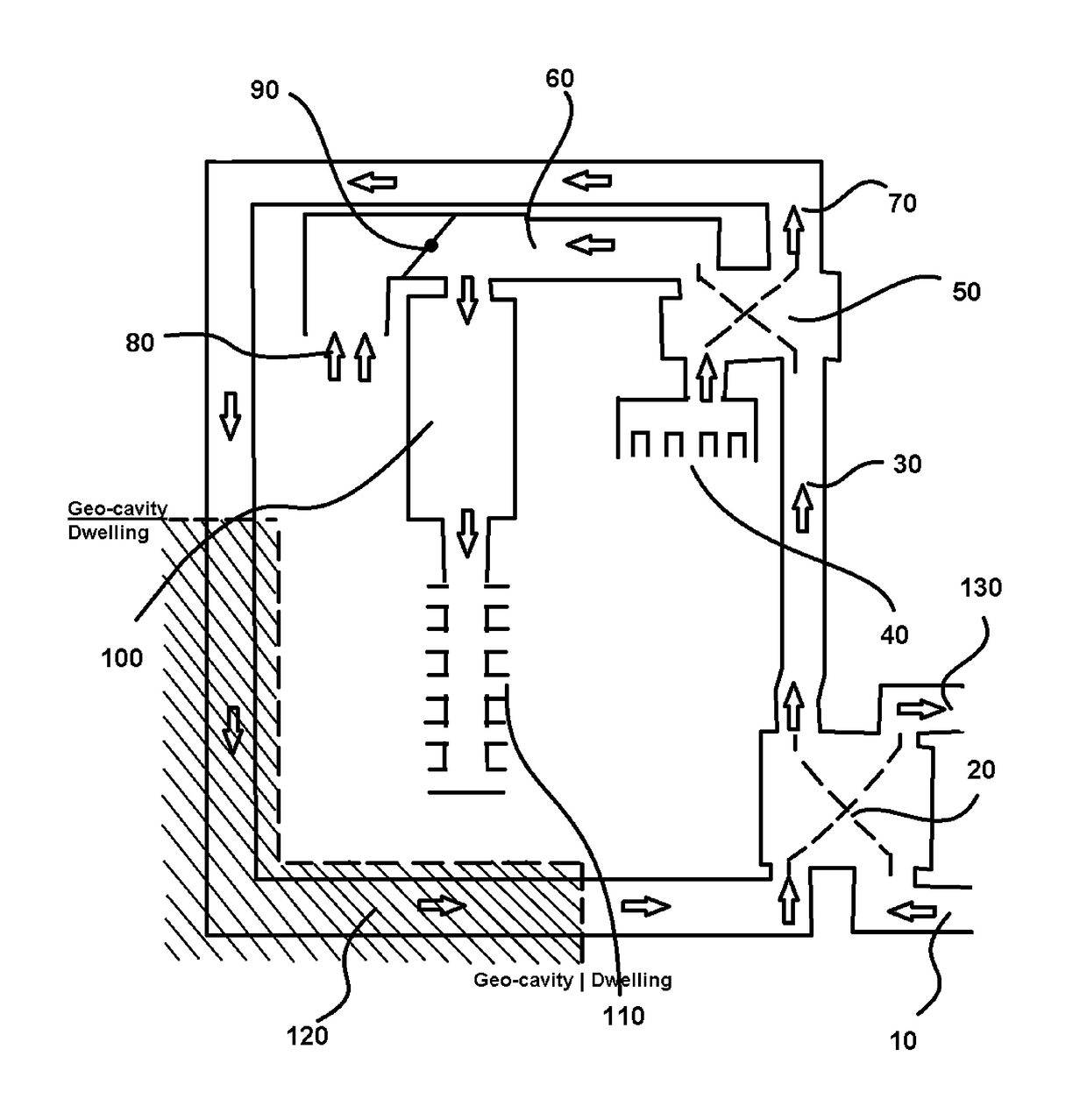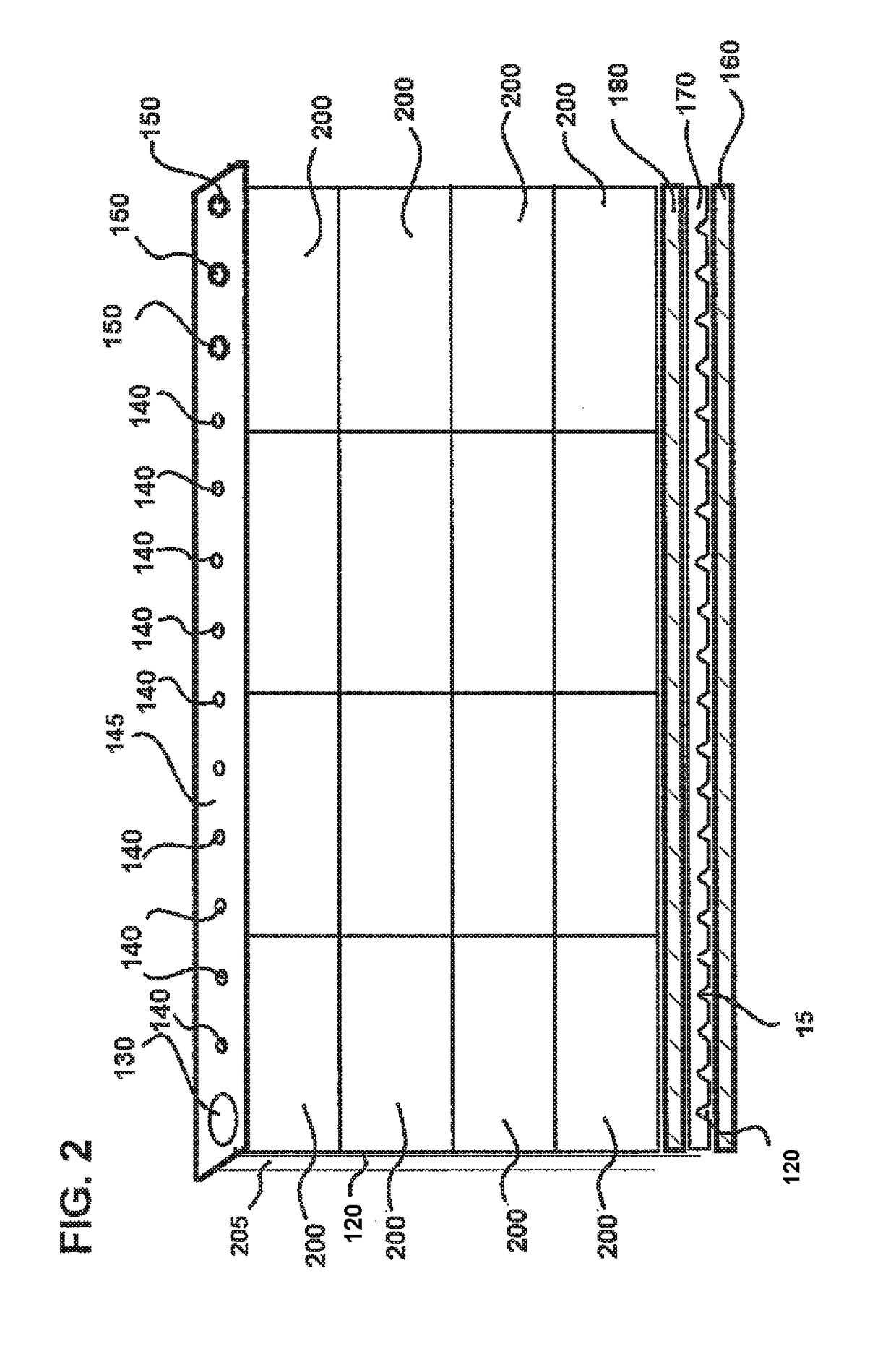Geothermal Heating, Cooling, and Dehumidification Ventilation System
a ventilation system and geothermal heating technology, applied in free-cooling systems, heating types, lighting and heating equipment, etc., can solve the problems of requiring a great deal of space, affecting the air quality of the indoor environment, and the cost is still prohibitive for the average consumer, so as to facilitate air circulation and reduce the strain on the building. , the effect of ample tim
- Summary
- Abstract
- Description
- Claims
- Application Information
AI Technical Summary
Benefits of technology
Problems solved by technology
Method used
Image
Examples
Embodiment Construction
[0022]The present invention is a system for augmenting the conventional HVAC system of a building via the use of the known geothermal properties of the earth. The goal of the present invention is to provide a means of eradicating contaminants within a basement, such as mold, mildew, allergens, and radon gas, and thereby enhancing the quality of living for the inhabitants of the building, maintaining additional, usable living space within the building, free from said associated contaminants frequently found to exist in conventional basements. Similarly, by augmenting the conventional HVAC system of a building, money is ultimately saved by the end user. The present invention seeks to regulate the temperature of an entire building by employing the relatively constant temperature found within the concrete foundation, concrete basement, crawl space, slab, and / or attic of the building. The present invention solves the problem of basement contamination and dampness effectively by applying ...
PUM
 Login to View More
Login to View More Abstract
Description
Claims
Application Information
 Login to View More
Login to View More - R&D
- Intellectual Property
- Life Sciences
- Materials
- Tech Scout
- Unparalleled Data Quality
- Higher Quality Content
- 60% Fewer Hallucinations
Browse by: Latest US Patents, China's latest patents, Technical Efficacy Thesaurus, Application Domain, Technology Topic, Popular Technical Reports.
© 2025 PatSnap. All rights reserved.Legal|Privacy policy|Modern Slavery Act Transparency Statement|Sitemap|About US| Contact US: help@patsnap.com



